旅游景点介绍词翻译分析解析
- 格式:ppt
- 大小:1.87 MB
- 文档页数:64

举世闻名的九寨沟自然保护区位于我国四川省境内,是一片纵深达35公里的自然风景区。
区内有终年积雪的山峰、苍翠繁茂的森林、宁静悠远的湖泊。
人们常常将九寨沟比作世外桃源。
Located in Sichuan Province, the World-famous Jiuzhaigou Nature Reserve covers an area of natural beauty 35 kilometers long. In the reserve there are perennially snow-topped mountain peaks, verdant and lush forests and stretches of serene lakes. Jiuzhaigou is often compared to a haven of peace, leaving behind nothing but earthly troubles and worries.九寨沟是水的天地,水构成了九寨沟最富魅力的景色。
九寨沟风景区内有许多清澈的湖泊,它们或隐匿于峡谷,或镶嵌于原始森林。
这些湖泊大小不一、形状各异,如同一面面镜子,闪耀着斑澜的光芒。
Jiuzhaigou is a world of water, which brings Jiuzhaigou its most enchanting views. Jiuzhaigou boasts many clear lakes, some of which are hidden in the valleys and some inlay the virgin forests. With a variety of shapes and sizes, these lakes look like (gleaming) mirrors projecting colorful light rings in the sunshine.四川素有“天府之国”的美称。
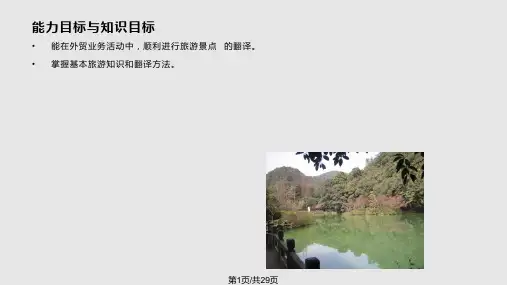
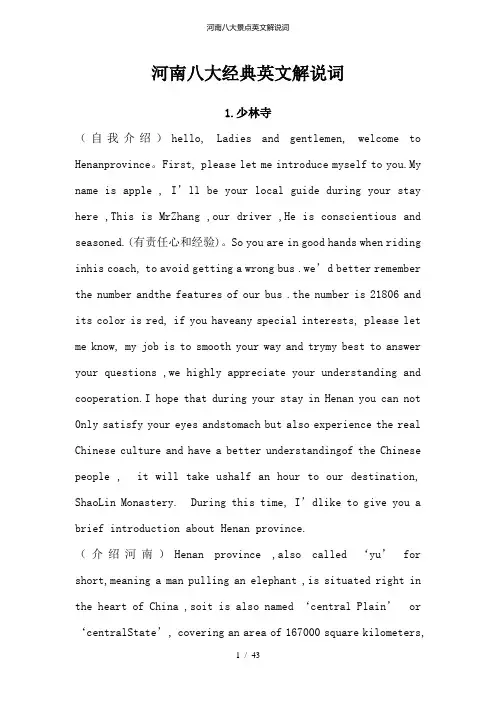
河南八大经典英文解说词1.少林寺(自我介绍)hello, Ladies and gentlemen, welcome to Henanprovince。
First, please let me introduce myself to you.My name is apple , I’ll be your local guide during your stay here ,This is MrZhang ,our driver ,He is conscientious and seasoned.(有责任心和经验)。
So you are in good hands when riding inhis coach, to avoid getting a wrong bus .we’d better remember the number andthe features of our bus .the number is 21806 and its color is red, if you haveany special interests, please let me know, my job is to smooth your way and trymy best to answer your questions ,we highly appreciate your understanding and cooperation.I hope that during your stay in Henan you can not 0nly satisfy your eyes andstomach but also experience the real Chinese culture and have a better understandingof the Chinese people , it will take ushalf an hour to our destination, ShaoLin Monastery. During this time, I’dlike to give you a brief introduction about Henan province.(介绍河南)Henan province ,also called ‘yu’ for short,meaning a man pulling an elephant ,is situated right in the heart of China ,soit is also named ‘central Plain’ or ‘centralState’, covering an area of 167000 square kilometers,with a total populationof 100 million ,which is the largest of all provinces in China.As we all know, the Yellow River is the cradle of Chinese civilization, is our mother river. Andit runs through 8 cities of Henan province, as its name means ,the province islocated to the southern bank of the Yellow River, A great number of history books andexcavation have proved that 8000 years ago, Chinese ancestors started thecivilization here. So every year, many Chinese descendants from home and abroadto worship the fathers. The last few years has seen the development of Henan province. Especially in the industry and agriculture.The GDP of Henan has been ranked top in the middle area. Henanprovince is famous not only for its long history and rich culture,but also forits beautiful natural scenery. For the overseas tourists , Henanprovince is just like a natural history museum with splendid culture civilization.Zhengzhou,which is the capital and largest city of Henanprovince in central China.A prefecture-level city, it also serves as the centre of political, economic,technological, and educational of the province, as well as a majortransportation hub for Central China. Zhengzhou is also named mall city .It wasonce the capital of Shang dynasty 3500years ago and now is a modern commercialcity. That makes it closely relate to shang, which means commerce and trade inchina. Because of that, Zhengzhouis one of the Eight Great Ancient Capitals of China and holds important statusof modern mall center in connection with other places.Zhengzhou experiences amonsoon-influenced, four-season humid subtropical climate, with cool, drywinters and hot, humid summers. Spring and autumn are dry and short.Well, our bus is coming tothe downtown area of Dengfeng city. Dengfeng has a long history. A number ofsites in and around the township are well worth visiting them. Foremost on thelist is the Shaolin Temple the birth place ofboth Kungfu and Zen Buddhism.Nowladies and gentlemen, our destination has arrived, please carry your items withyou, and get down the bus one by one carefully. Then let’s visit it together.Shaolin TempleWell, ladies and gentlemen:Here weare, Shaolin Temple, in the region of SongMountain, Dengfeng City, Henan Province, is reputedto be the Number One Templeunder Heaven. Emperor Xiaowen of the Northern Wei dynasty , had the templebuilt to accommodate the Indian masterBatuo ,ShaolinTemple means “temple in the thickforests of Shaoshi Mountain”.Shaolin Temple embraces many exciting attractions; the first sight we see is the Shanmen Hall. Hung on its top is atablet reading 'Shaolin Temple'. The tablet wasinscribed by the Emperor Kangxi during the Qing Dynasty. Under the stairs ofthe hall stands two stone lions made in the Ming Dynasty . The hall enshrinesthe Maitreya Buddha.Next we arrive at the Hall of Heavenly Kings. The gate of the hallis guarded by two figures depicting Vajra .Inside the hall are figures of theFour Heavenly Kings who are responsible for inspecting peoples' behavior,helping the troubled, and blessing the people.Please follow me, this is the Mahavira Hall.The Mahavira Hall’s center is ju st before your eyes. Both importantcelebrations and regular prayers are held here. 18 Buddhist Arhats stand alongthe eastern and the southern walls of the hall. Buddhas of the Middle, East andWest are enshrined in this hall, respectively Sakyamuni Buddha, PharmacistBuddha and Amitabha Buddha. On both sides in front of the hall of Mahavira, standthe Bell tower and the Drum Towersymmetrically .They were used to report hoursfor the temple .Normally the bell is used in the morning while the drum, in theafterno on, hence the saying “morning bell and afternoon drum”.Having seen the highlights in the temple courtyards ,let’s visitanother leading section of the Shaolin Temple Sightseeing Zone , named the Pagoda Forest which stands at thefoot of Shaoshi Mountainabout half a kilometer west to Shaolin Temple. It is aconcentration of tomb pagodas for eminent monks and abbots of the temple. Arough count shows more than 240 tomb pagodas of various sizes from the Tang,Song, Jin, Yuan, Ming and Qing dynasties , making it the biggest pagoda forestin China.Most of the pagodas are stone and brick structures.Their shapes are varied,including polygonal, cylindrical, vase-like, conical and monolithic, making thepagoda forest an exhibition of ancient pagodas, carvings and calligraphy ofvarious dynasties. Besides, it isknown that martial arts have been practiced at the temple throughout itshistory. A legend had it that Bodhidharma found monks weak and unhealthy afterlong time meditation practices, so he developed the martial arts to strengthenthem, which formed the basis of Shaolin Kungfu. However the unique aspect ofShaolin culture is the combinationof Shaolin Kungfu and Chan Buddhism.Ok ,ladies andgentlemen, the explanation of the Shaolin Temple has come to an end .Now youcan have a free look and take some pictures as well .See you on the bus an hourlater .Wish you a pleasant tour .Thank you!2.清明上河园(自我介绍)hello, Ladies and gentlemen, welcome to Henan province。
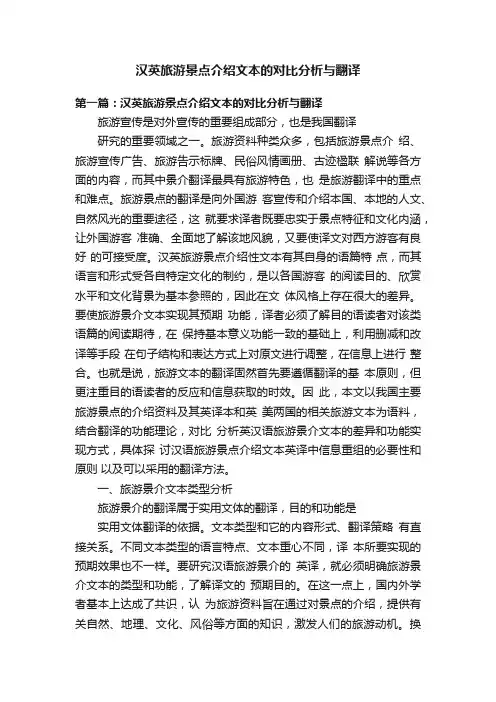
汉英旅游景点介绍文本的对比分析与翻译第一篇:汉英旅游景点介绍文本的对比分析与翻译旅游宣传是对外宣传的重要组成部分,也是我国翻译研究的重要领域之一。
旅游资料种类众多,包括旅游景点介绍、旅游宣传广告、旅游告示标牌、民俗风情画册、古迹楹联解说等各方面的内容,而其中景介翻译最具有旅游特色,也是旅游翻译中的重点和难点。
旅游景点的翻译是向外国游客宣传和介绍本国、本地的人文、自然风光的重要途径,这就要求译者既要忠实于景点特征和文化内涵,让外国游客准确、全面地了解该地风貌,又要使译文对西方游客有良好的可接受度。
汉英旅游景点介绍性文本有其自身的语篇特点,而其语言和形式受各自特定文化的制约,是以各国游客的阅读目的、欣赏水平和文化背景为基本参照的,因此在文体风格上存在很大的差异。
要使旅游景介文本实现其预期功能,译者必须了解目的语读者对该类语篇的阅读期待,在保持基本意义功能一致的基础上,利用删减和改译等手段在句子结构和表达方式上对原文进行调整,在信息上进行整合。
也就是说,旅游文本的翻译固然首先要遵循翻译的基本原则,但更注重目的语读者的反应和信息获取的时效。
因此,本文以我国主要旅游景点的介绍资料及其英译本和英美两国的相关旅游文本为语料,结合翻译的功能理论,对比分析英汉语旅游景介文本的差异和功能实现方式,具体探讨汉语旅游景点介绍文本英译中信息重组的必要性和原则以及可以采用的翻译方法。
一、旅游景介文本类型分析旅游景介的翻译属于实用文体的翻译,目的和功能是实用文体翻译的依据。
文本类型和它的内容形式、翻译策略有直接关系。
不同文本类型的语言特点、文本重心不同,译本所要实现的预期效果也不一样。
要研究汉语旅游景介的英译,就必须明确旅游景介文本的类型和功能,了解译文的预期目的。
在这一点上,国内外学者基本上达成了共识,认为旅游资料旨在通过对景点的介绍,提供有关自然、地理、文化、风俗等方面的知识,激发人们的旅游动机。
换言之,汉英旅游景介都是通过传递信息达到吸引游客的目的的。
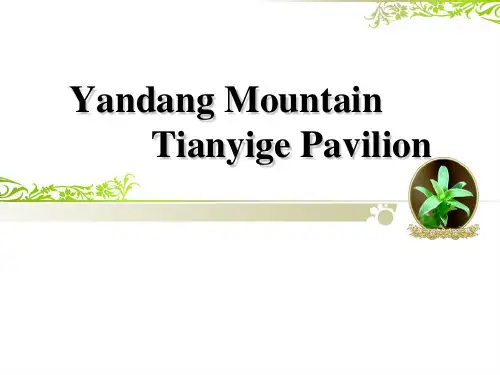
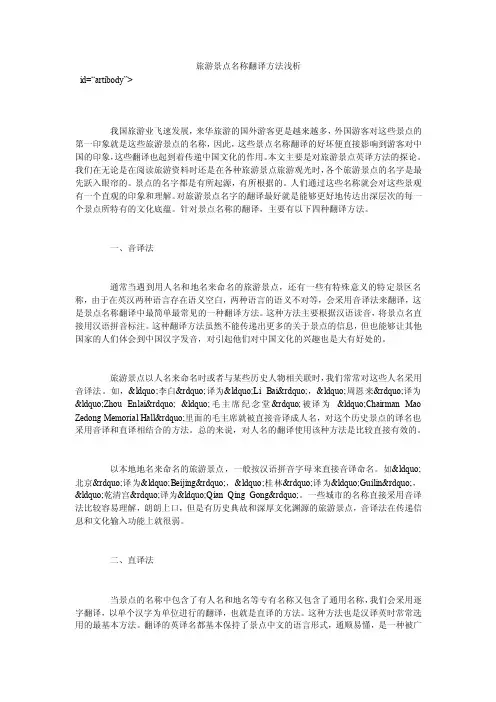
旅游景点名称翻译方法浅析id=“artibody”>我国旅游业飞速发展,来华旅游的国外游客更是越来越多,外国游客对这些景点的第一印象就是这些旅游景点的名称,因此,这些景点名称翻译的好坏便直接影响到游客对中国的印象,这些翻译也起到着传递中国文化的作用。
本文主要是对旅游景点英译方法的探论。
我们在无论是在阅读旅游资料时还是在各种旅游景点旅游观光时,各个旅游景点的名字是最先跃入眼帘的。
景点的名字都是有所起源,有所根据的。
人们通过这些名称就会对这些景观有一个直观的印象和理解。
对旅游景点名字的翻译最好就是能够更好地传达出深层次的每一个景点所特有的文化底蕴。
针对景点名称的翻译,主要有以下四种翻译方法。
一、音译法通常当遇到用人名和地名来命名的旅游景点,还有一些有特殊意义的特定景区名称,由于在英汉两种语言存在语义空白,两种语言的语义不对等,会采用音译法来翻译,这是景点名称翻译中最简单最常见的一种翻译方法。
这种方法主要根据汉语读音,将景点名直接用汉语拼音标注。
这种翻译方法虽然不能传递出更多的关于景点的信息,但也能够让其他国家的人们体会到中国汉字发音,对引起他们对中国文化的兴趣也是大有好处的。
旅游景点以人名来命名时或者与某些历史人物相关联时,我们常常对这些人名采用音译法。
如,“李白”译为“Li Bai”,“周恩来”译为“Zhou Enlai” “毛主席纪念堂”被译为“Chairman Mao Zedong Memorial Hall”里面的毛主席就被直接音译成人名,对这个历史景点的译名也采用音译和直译相结合的方法。
总的来说,对人名的翻译使用该种方法是比较直接有效的。
以本地地名来命名的旅游景点,一般按汉语拼音字母来直接音译命名。

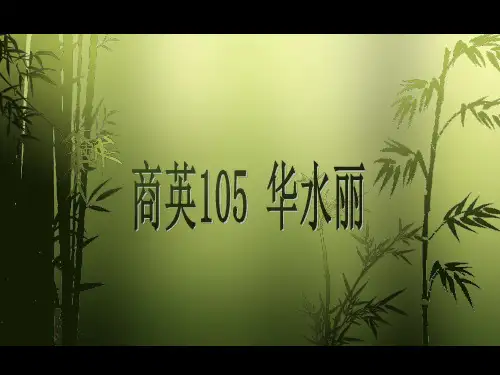
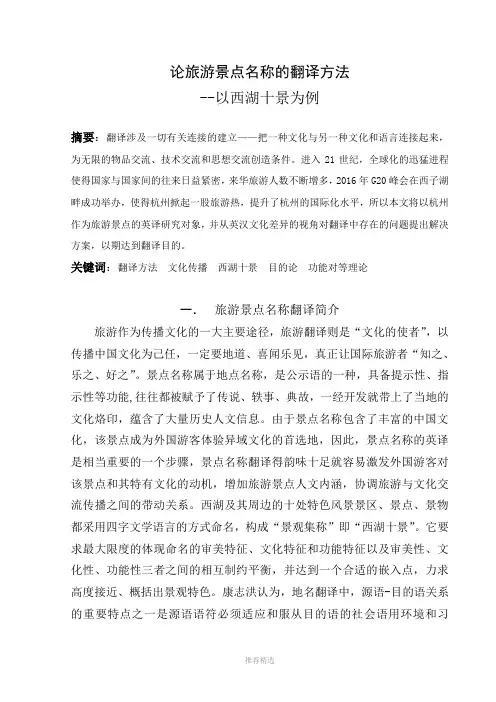
论旅游景点名称的翻译方法--以西湖十景为例摘要:翻译涉及一切有关连接的建立——把一种文化与另一种文化和语言连接起来,为无限的物品交流、技术交流和思想交流创造条件。
进入21世纪,全球化的迅猛进程使得国家与国家间的往来日益紧密,来华旅游人数不断增多,2016年G20峰会在西子湖畔成功举办,使得杭州掀起一股旅游热,提升了杭州的国际化水平,所以本文将以杭州作为旅游景点的英译研究对象,并从英汉文化差异的视角对翻译中存在的问题提出解决方案,以期达到翻译目的。
关键词:翻译方法文化传播西湖十景目的论功能对等理论一.旅游景点名称翻译简介旅游作为传播文化的一大主要途径,旅游翻译则是“文化的使者”,以传播中国文化为己任,一定要地道、喜闻乐见,真正让国际旅游者“知之、乐之、好之”。
景点名称属于地点名称,是公示语的一种,具备提示性、指示性等功能,往往都被赋予了传说、轶事、典故,一经开发就带上了当地的文化烙印,蕴含了大量历史人文信息。
由于景点名称包含了丰富的中国文化,该景点成为外国游客体验异域文化的首选地,因此,景点名称的英译是相当重要的一个步骤,景点名称翻译得韵味十足就容易激发外国游客对该景点和其特有文化的动机,增加旅游景点人文内涵,协调旅游与文化交流传播之间的带动关系。
西湖及其周边的十处特色风景景区、景点、景物都采用四字文学语言的方式命名,构成“景观集称”即“西湖十景”。
它要求最大限度的体现命名的审美特征、文化特征和功能特征以及审美性、文化性、功能性三者之间的相互制约平衡,并达到一个合适的嵌入点,力求高度接近、概括出景观特色。
康志洪认为,地名翻译中,源语-目的语关系的重要特点之一是源语语符必须适应和服从目的语的社会语用环境和习惯;地名翻译的关键不在于语符意义的对等或语音的对应,而在于译名究竟以何种合适的方式在目的语中指称源语名称之所指。
“西湖十景”,景名对景点的形容高度贴切,令人遐想,如见其形,深受国内外广大游客喜爱,堪称景点命名的典范之作。
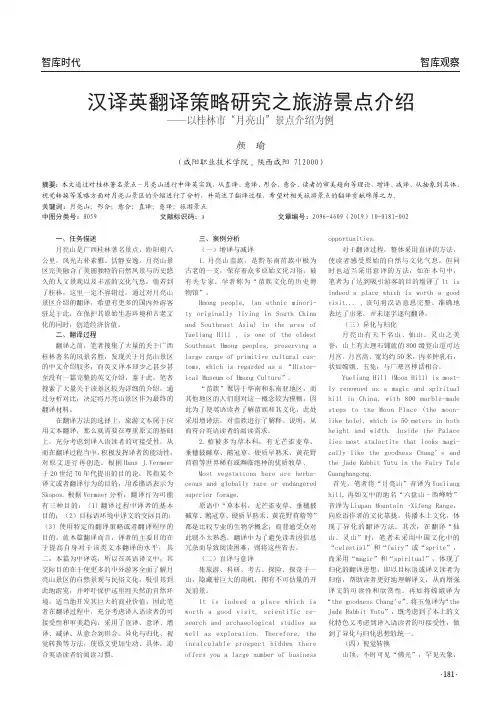
智库时代 ·181·智库观察汉译英翻译策略研究之旅游景点介绍颜 瑜(咸阳职业技术学院,陕西咸阳 712000)摘要:本文通过对桂林著名景点-月亮山进行中译英实践,从直译、意译、形合、意合、读者的审美趋向等理论,增译、减译、从抽象到具体、视觉转换等策略方面对月亮山景区的介绍进行了分析,并简述了翻译过程,希望对相关旅游景点的翻译贡献绵薄之力。
关键词:月亮山;形合;意合;直译;意译;旅游景点中图分类号:H059文献标识码:A文章编号:2096-4609(2019)10-0181-002一、任务描述月亮山是广西桂林著名景点,距阳朔八公里,风光古朴素雅、恬静安逸。
月亮山景区完美融合了美丽独特的自然风景与历史悠久的人文景观以及丰富的文化气息,倘若到了桂林,这里一定不容错过。
通过对月亮山景区介绍的翻译,希望有更多的国内外游客驻足于此,在保护其原始生态环境和古老文化的同时,创造经济价值。
二、翻译过程翻译之前,笔者搜集了大量的关于广西桂林著名的风景名胜,发现关于月亮山景区的中文介绍较多,而英文译本却少之甚少甚至没有一篇完整的英文介绍,鉴于此,笔者搜索了大量关于该景区较为详细的介绍,通过分析对比,决定将月亮山景区作为最终的翻译材料。
在翻译方法的选择上,旅游文本属于应用文本翻译,那么就需要在尊重原文的基础上,充分考虑到译入语读者的可接受性,从而在翻译过程当中,积极发挥译者的能动性,对原文进行再创造。
根据Hans J.Vermeer 于20世纪70年代提出的目的论,其指某个译文或者翻译行为的目的,用希腊语表示为Skopos.根据Vermeer 分析,翻译行为可能有三种目的:(1)翻译过程中译者的基本目的;(2)目标语环境中译文的交际目的;(3)使用特定的翻译策略或者翻译程序的目的。
就本篇翻译而言,译者的主要目的在于提高自身对于该类文本翻译的水平;其二,本篇为中译英,所以在英语译文中,其交际目的在于使更多的中外游客全面了解月亮山景区的自然景观与民俗文化,吸引其到此地游览,并呼吁保护这里纯天然的自然环境,适当地开发其巨大的商业价值,因此笔者在翻译过程中,充分考虑译入语读者的可接受性和审美趋向,采用了直译、意译、增译、减译、从意合到形合、异化与归化、视觉转换等方法,使原文更加生动、具体,迎合英语读者的阅读习惯。
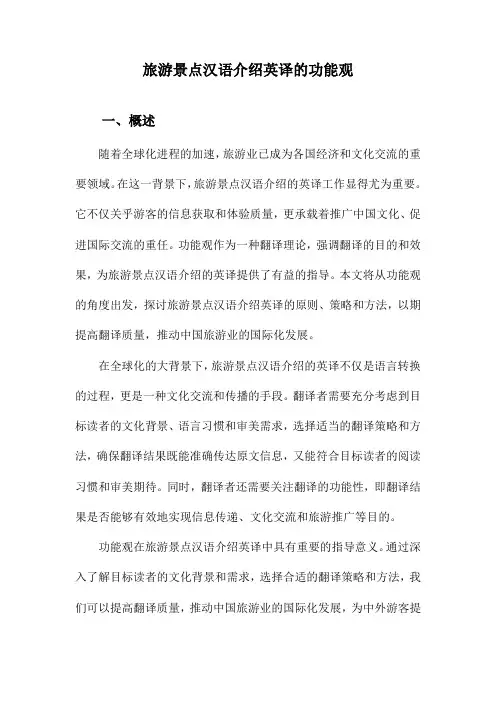
旅游景点汉语介绍英译的功能观一、概述随着全球化进程的加速,旅游业已成为各国经济和文化交流的重要领域。
在这一背景下,旅游景点汉语介绍的英译工作显得尤为重要。
它不仅关乎游客的信息获取和体验质量,更承载着推广中国文化、促进国际交流的重任。
功能观作为一种翻译理论,强调翻译的目的和效果,为旅游景点汉语介绍的英译提供了有益的指导。
本文将从功能观的角度出发,探讨旅游景点汉语介绍英译的原则、策略和方法,以期提高翻译质量,推动中国旅游业的国际化发展。
在全球化的大背景下,旅游景点汉语介绍的英译不仅是语言转换的过程,更是一种文化交流和传播的手段。
翻译者需要充分考虑到目标读者的文化背景、语言习惯和审美需求,选择适当的翻译策略和方法,确保翻译结果既能准确传达原文信息,又能符合目标读者的阅读习惯和审美期待。
同时,翻译者还需要关注翻译的功能性,即翻译结果是否能够有效地实现信息传递、文化交流和旅游推广等目的。
功能观在旅游景点汉语介绍英译中具有重要的指导意义。
通过深入了解目标读者的文化背景和需求,选择合适的翻译策略和方法,我们可以提高翻译质量,推动中国旅游业的国际化发展,为中外游客提供更好的旅游体验和文化交流机会。
1. 阐述旅游景点汉语介绍英译的重要性和现实意义。
随着中国经济的快速发展和国际地位的提升,越来越多的外国游客选择来到中国,探索其丰富的历史文化和壮丽的自然风景。
在这个过程中,旅游景点汉语介绍的英译显得尤为重要。
这不仅关乎到游客的体验,也直接影响到中国的国际形象和文化传播。
准确的旅游景点汉语介绍英译能够帮助外国游客更好地理解和欣赏中国的文化。
许多中文词汇和表达方式在英文中并没有直接的对应,需要通过专业的翻译来传达其深层含义和文化背景。
外国游客在游览过程中,不仅能够看到美丽的景色,还能更加深入地了解中国的历史、传统和价值观。
高质量的翻译能够促进中国的国际旅游业发展。
旅游业是一个国家经济发展的重要支柱之一,而高质量的翻译则是吸引外国游客的关键。
英汉旅游景点介绍文本对比与翻译1. 概述在国际交流日益频繁的今天,旅游成为人们生活中不可或缺的一部分。
无论是国内游还是出国游,大家都乐于体验不同地域的风土人情。
而在旅游过程中,了解目的地的景点是必不可少的一环。
在这篇文章中,我们将探讨英语和汉语两种语言对旅游景点介绍文本的表达方式以及其之间的翻译对比。
2. 英汉旅游景点介绍文本对比2.1 英文旅游景点介绍文本示例Stonehenge, located in Wiltshire, England, is a prehistoric monument that consists of a ring of standing stones. It is also listed as a UNESCO World Heritage Site. The monument is believed to have been constructed around 3000-2000 BC, andits purpose and significance still remain a mystery. Visitors come from all over the world to marvel at the ancient stones and ponder their meaning.2.2 汉语旅游景点介绍文本示例位于英格兰威尔特郡的巨石阵是一座史前纪念碑,由一圈矗立的石头组成。
它还被列入了联合国教科文组织世界遗产名录。
这座纪念碑被认为是建于公元前3000-2000年左右,其用途和意义仍然是一个谜。
来自世界各地的游客前来参观这些古老的石头,并思考它们的意义。
通过对比,我们可以看出,英文和汉语在表达旅游景点介绍文本时有各自的特点。
英文注重简洁明了的表达,突出景点的历史、地理位置以及吸引游客的原因;而汉语则更加注重景点的描述和背后的意义解读,使读者在阅读的过程中能够更加贴近景点本身,感受其魅力。
中国旅游景点青城山英文介绍带翻译青城山是全球道教全真道圣地,位于著名的都江堰市西南,享有“青城天下幽”的美誉。
下面店铺为大家带来中国旅游景点青城山英文介绍,欢迎大家阅读!中国旅游景点青城山英文介绍Next to Chengdu lies Mount Qingcheng, one of thebirthplaces of Taoism (Daoism) China's onlyindigenous religion.青城山位邻成都,中国唯一的本土宗教道教的发祥地之一。
It is still a religious centre sprinkle with caves andshrines venerated by Taosit.这仍然是一个宗教中心,有被道士所尊崇的洞穴和圣祠。
Founded in AD 143 in Mount Qingcheng, Taoism hasdeveloped into an important religion in SoutheastAsia, exerting tremendous influence there.道教在青城山成立于公元143年,已经发展成为一个在东南亚重要的宗教,发挥巨大的影响力。
For ordinary tourists, Mount Qingcheng is an ideal summer resort.对于普通游客,青城山是一个理想的避暑胜地。
The four-hour trek to its summit,1600 metres above sea level,is a pleasant trip.四个小时的长途跋涉到达海拔1600米峰顶,是一次愉快的旅行。
Sixteen kilometres from Dujiangyan city,Mount Qingcheng has been known since ancient timesas “the most tranquil place under heaven (青城天下幽)”.距都江堰市16公里,青城山自古以来因“青城天下幽”而闻名。
旅游景点英译公示语语用失误例析1. 引言1.1 背景介绍旅游景点英译公示语的重要性在如今的全球化环境下变得愈发重要。
随着中国游客数量的增加和海外游的流行,英译公示语不仅是对外国游客展示当地文化和历史的重要窗口,也是提升旅游体验、增强旅游吸引力的必不可少的因素之一。
在实际应用中,我们不难发现一些旅游景点英译公示语存在着语用失误,甚至造成误解或困扰。
为了提高英译公示语的质量,本文将从语用失误在旅游景点英译公示语中的表现、具体例析、改进建议以及影响与解决措施等方面展开讨论,旨在为相关从业者和广大游客提供借鉴和改进的方向。
【背景介绍至此结束】2. 正文2.1 旅游景点英译公示语的重要性The importance of English translation signs in tourist attractions cannot be overstated. These signs serve as a crucial communication tool for foreign visitors who may not understand the local language. They provide essential information about the site, including historical background, safety guidelines, and cultural significance.2.2 语用失误在旅游景点英译公示语中的表现In the translation of tourist attraction signs, language use errors are commonly seen and can greatly affect the overall impression of the place. These errors can range from simple grammatical mistakes to cultural misunderstandings, and they can confuse or even offend visitors.2.3 语用失误例析在旅游景点的英译公示语中,语用失误是比较常见的情况。